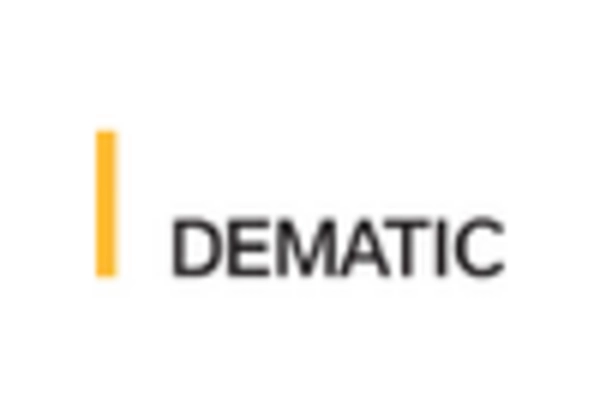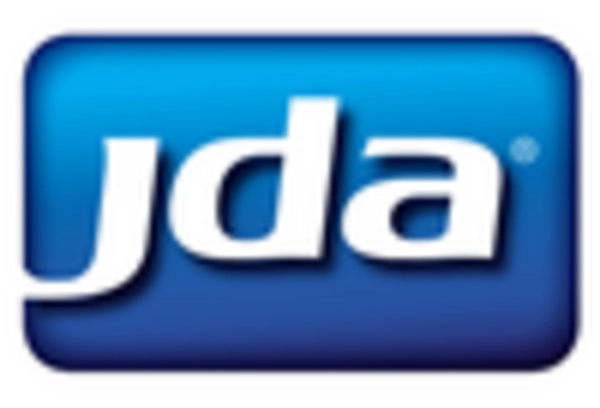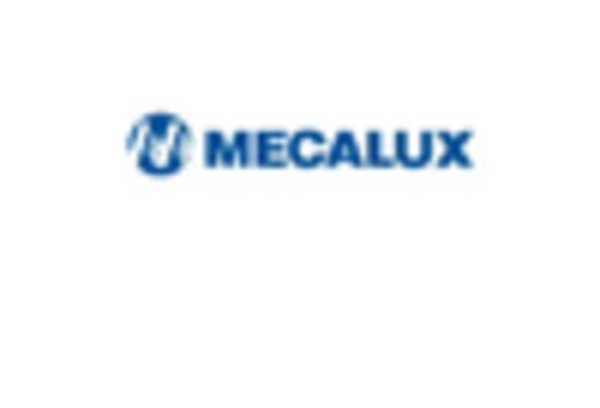The Warehouse Execution System Market (WES) market is currently characterized by a dynamic competitive landscape, driven by the increasing demand for automation and efficiency in supply chain operations. Key players such as Dematic (US), Honeywell (US), and Körber (DE) are strategically positioning themselves through innovation and technological advancements. Dematic (US) focuses on integrating advanced robotics and AI into their systems, enhancing operational efficiency. Meanwhile, Honeywell (US) emphasizes digital transformation, leveraging IoT technologies to optimize warehouse management. Körber (DE) is actively pursuing partnerships to expand its service offerings, thereby enhancing its competitive edge. Collectively, these strategies contribute to a robust competitive environment, where innovation and technological integration are paramount.
In terms of business tactics, companies are increasingly localizing manufacturing and optimizing supply chains to respond to regional demands effectively. The WES market appears moderately fragmented, with several players vying for market share. This fragmentation allows for diverse solutions tailored to specific customer needs, while the collective influence of major players like SAP (DE) and Oracle (US) helps to shape industry standards and practices.
In August 2025, Dematic (US) announced a strategic partnership with a leading e-commerce platform to develop a customized WES solution aimed at enhancing order fulfillment speed. This collaboration is significant as it not only expands Dematic's market reach but also aligns with the growing trend of e-commerce, where rapid delivery is crucial. The partnership is expected to leverage Dematic's advanced automation technologies, thereby improving operational efficiencies for their clients.
In September 2025, Honeywell (US) launched a new AI-driven analytics tool designed to optimize warehouse operations by predicting inventory needs and streamlining workflows. This initiative underscores Honeywell's commitment to digital transformation and positions the company as a leader in integrating AI into warehouse management systems. The tool is anticipated to provide clients with actionable insights, ultimately enhancing decision-making processes and operational performance.
In July 2025, Körber (DE) expanded its global footprint by acquiring a regional logistics software provider, which allows it to enhance its WES capabilities and offer more comprehensive solutions to its clients. This acquisition is indicative of Körber's strategy to bolster its service offerings and adapt to the evolving needs of the market. By integrating the acquired technology, Körber aims to provide a more robust and versatile WES solution, thereby increasing its competitive advantage.
As of October 2025, the WES market is witnessing trends such as digitalization, sustainability, and AI integration, which are reshaping competitive dynamics. Strategic alliances are becoming increasingly important, as companies seek to combine strengths and innovate collaboratively. The competitive landscape is likely to evolve from traditional price-based competition towards a focus on technological innovation, supply chain reliability, and enhanced customer experiences. This shift suggests that companies that prioritize innovation and adaptability will be better positioned to thrive in the future.

















Leave a Comment